7.2 /10 1 Votes
6.3/10 TV Theme music composer Edouard Michael Ending theme "Rite de la Terre" Genre Science Fiction | 8/10 IMDb Presented by Peter Fairley Opening theme "Rite de la Terre" First episode date 28 September 1970 | |||||||||||||||||||||||||||||||||
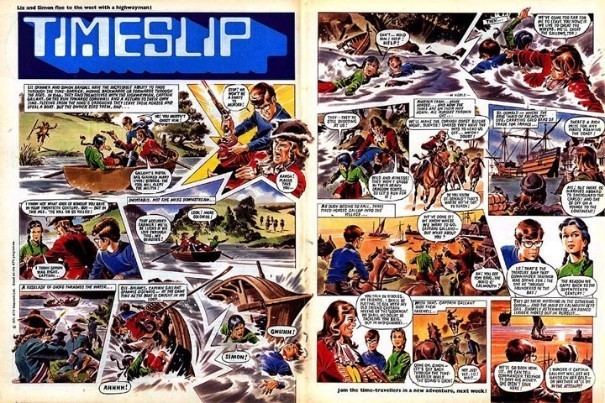 | ||||||||||||||||||||||||||||||||||
Developed by Ruth Boswell
James Boswell Starring Cheryl Burfield
Spencer Banks
Denis Quilley
Iris Russell
Derek Benfield Networks ITV, Associated Television Cast Spencer Banks, Cheryl Burfield, Denis Quilley, Iris Russell, Derek Benfield | ||||||||||||||||||||||||||||||||||
Timeslip season 1 episode 1 s1e1 the wrong end of time pt 1
Timeslip is a British children's science fiction television series made by ATV for the ITV network and broadcast between 1970 and 1971. The series centres on two children, Simon Randall (Spencer Banks) and Liz Skinner (Cheryl Burfield) who discover the existence of a strange anomaly, known as the "Time Barrier", that enables them to travel in time to different historical periods in alternate pasts and futures. The two children have contrasting personalities; whereas Simon is studious, Liz is something of a tomboy, and this often leads to conflict between the two. However, as the series progresses, their antagonism matures into a deep bond of friendship.
Contents
- Timeslip season 1 episode 1 s1e1 the wrong end of time pt 1
- Timeslip pilot episode opening credits
- The Wrong End of Time
- The Time of the Ice Box
- The Year of the Burn Up
- The Day of the Clone
- Production
- Cast and crew
- Critical reception
- Archive status
- Other media
- List of serials
- References
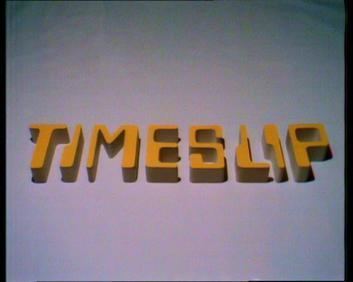
The main theme of the series is concerned with the way mankind uses – and abuses – science and technology. It explores how the pursuit of scientific knowledge and advancement can lead to the depersonalisation of individuals and the abandonment of moral principles. A secondary theme – explored in the instances where Liz and Simon encounter potential future versions of themselves – concerns the extent to which an individual can change according to the situations encountered in his or her life.
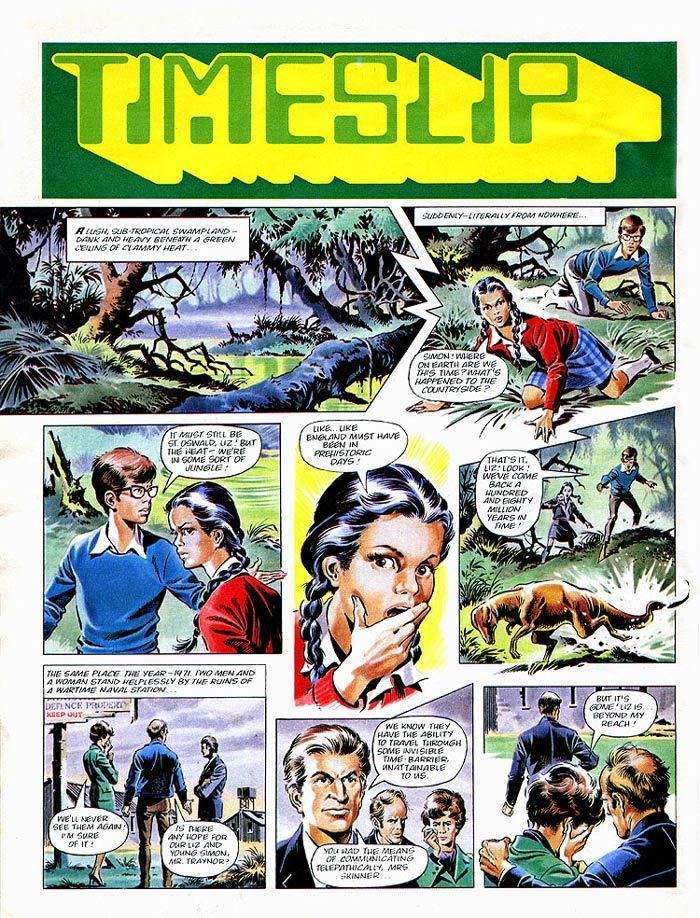
Timeslip pilot episode opening credits
The Wrong End of Time

In the first serial, "The Wrong End of Time", Simon, whose mother has died recently, has been taken on holiday in 1970 by the Skinner family – father Frank (Derek Benfield), mother Jean (Iris Russell) and daughter Liz – to the village of St Oswald. Frank had served at the (now abandoned) naval research base in St Oswald during World War II, where he had suffered a mental breakdown. This has left him with no recollection of what happened during his time there. Also staying at St Oswald is a man called Charles Traynor (Denis Quilley), who reveals that he was Skinner's commanding officer at the base during the war. Traynor had ordered Skinner to destroy the apparatus the scientists at the base were working on, and he is eager to learn from Skinner if he succeeded in the task. This is because a German expeditionary team attacked and took over the base for a short time in 1940. The German commander, Gottfried (Sandor Elès), is now a prominent scientist on the other side of the Iron Curtain, and Traynor is concerned that if the research work done at the base had fallen into his hands, it could be used against the West. While out playing near the ruins of the naval base, Liz and Simon encounter the Time Barrier for the first time. They are transported back to 1940, to the very day the Germans took over the base. There they encounter both Traynor, who is commander of the base, and Liz's father, a young naval recruit (played by John Alkin). A link is maintained to the present via Liz's mother, who is able to communicate telepathically with her daughter. When the Germans arrive, Liz and Simon are initially captured, but then escape and succeed in helping young Frank Skinner carry out Traynor's orders to destroy the secret apparatus – a prototype laser weapon – before the Germans can seize it. They escape back through the Time Barrier, but instead of returning to St Oswald in their time of 1970, they find themselves in an icy wilderness.
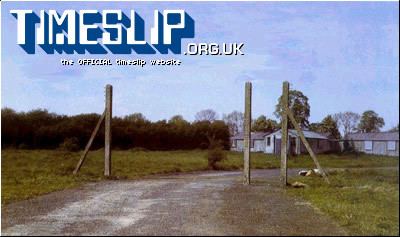
During their experience in 1940, Liz is shot yet the bullet does not harm her, which seems to confirm Traynor's advice to Liz's parents (in 1970) that the children are not actually in any danger from the time travel because they are only hallucinating about it and the past cannot harm them.
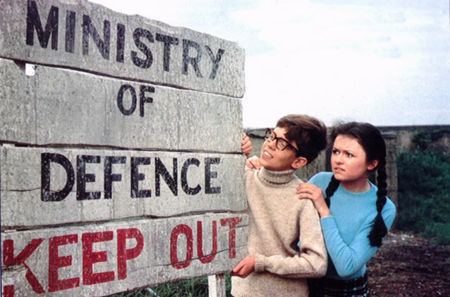
Prior to Liz and Simon entering the time barrier, at the beginning of the episode, another teenager enters the time barrier. This is witnessed by a man but isn't believed when he talks about it in the pub. After crossing the time barrier Liz and Simon encounter this teenager and help her return to the present day.
The Time of the Ice Box
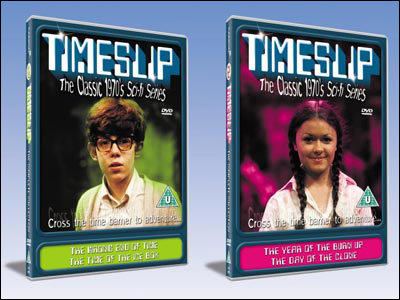
In the second serial, "The Time of the Ice Box", this icy wilderness is revealed to be Antarctica in the year 1990. Liz and Simon are rescued from the ice and brought to a research base – the International Institute for Biological Research, nicknamed the "Ice Box" - headed by Morgan C. Devereaux (John Barron). In the present, Traynor is amazed to learn of Devereaux's presence in the future; he had been a student of Devereaux's and believed he had died in 1969. Meanwhile, Liz is stunned when she encounters first her mother, and then her future self – a cold, emotionless, scientist going by the name Beth (Mary Preston) – working in the Ice Box. Her father Frank is also there, but has been buried under the ice for ten years as part of an experiment, which Liz only discovers later to her disgust and horror. The staff of the Ice Box are conducting controlled experiments on human volunteers, including tests of longevity drug called HA57. A catalogue of failures has been plaguing the research effort, but Devereaux refuses to entertain the possibility that the base computer is making errors. The failures get worse, and Devereaux's behaviour becomes more and more erratic. Liz and Simon learn that Devereaux is a clone of the original Devereaux, the first in the world. Investigating further, Liz and Simon discover that the purpose of the computer is to create a new clone of Devereaux. This is so that the formula for the longevity drug, which is known only to Devereaux and not written down, can be preserved and kept secret. The Ice Box researchers confront Devereaux, attempting to convince him that the computer is malfunctioning. Devereaux is unable to accept his failing and, suffering a mental breakdown, escapes out into the Antarctic ice. As the computer fails, the base begins to freeze over. The staff, including Jean and Beth, each take a dose of an anti-freeze formula in the hope of surviving the cold until rescue arrives. Liz and Simon depart; as they approach the Time Barrier, they discover the frozen body of Devereaux.
The Year of the Burn Up
In "The Year of the Burn Up", the Time Barrier returns Simon and Liz to 1970. Traynor warns them not to use the Time Barrier again. Determined to prevent the future of the Ice Box that they have witnessed, and curious as to what Traynor is afraid they might discover, they disobey him and once more enter the Time Barrier. Once again, they end up in 1990, but in an alternate future to that of the Ice Box. In this future, England is covered in tropical rainforest. Once again, Liz encounters her future self, Beth (once more played by Mary Preston). This time, however, she is a hippy Earth mother type who has rebelled against the technocracy that rules this future world, and lives in a primitive village with similar misfits. Simon also encounters his future self – a technocrat known as Controller 2957 (David Graham), charged with implementing the Master Plan intended to reshape the Earth to the benefit of mankind. The Master Plan had originally been devised in 1970 by Traynor. However, 2957 has since usurped him, and now Traynor, who is still alive in 1990, is determined to wreak his revenge. Traynor sabotages the computer managing the Master Plan. His interference ruins the Earth's climate, causing global temperatures to soar and leading to an environmental collapse of devastating proportions. Beth aids Liz and Simon in returning through the Time Barrier before heading for the safety of some caves with the misfits and 2957, who has seen the error of his ways, where there is water and they might stand a chance of survival.
The Day of the Clone
The final serial, "The Day of the Clone", ties together many of the elements of the previous serials. Believing that Beth needs her help, Liz attempts to return to 1990 via the Time Barrier, but is kidnapped by Traynor. Simon goes looking for Liz and tracks her to R1, a secret research establishment under Traynor's command. The children learn that R1 was established by Morgan C. Devereaux to research into the longevity drug – HA57 – that the children previously encountered in the Ice Box. They break out of R1 and, with Traynor in pursuit, they make their escape through the Time Barrier, which transports them to the year 1965. Realising that Devereaux would have been alive in this time, they return to R1. There the children learn that R1 is not only researching longevity, but also cloning. Devereaux believes that for the cloning and longevity process to be a success, subjects must also undergo psychological reconditioning, but Traynor, who is working at R1 as the Government's representative, disagrees, believing that Devereaux is turning the volunteer subjects into brainwashed puppets. When Traynor threatens to shut down R1, Devereaux has him detained and replaced by a clone. Simon realises that it is Devereaux who is the source of the dystopian futures they have witnessed, and that the Traynor they know has been a clone all along. The Time Barrier created a clone projection of Devereaux in the Ice Box in the hope that the children could return a working formula for HA57 to the Traynor clone in 1970. The Traynor clone is also a projection of the Time Barrier, charged with implementing Devereaux's vision of the future: the catastrophic Master Plan that will lead to the "Burn Up". Returning to 1970, Liz and Simon discover the real Traynor, locked up in a secret room in R1 since 1965. The children and the real Traynor confront the clone Traynor at the Time Barrier at St Oswald. Traynor tells the clone that he doesn't exist, that he is a projection. As the clone nears the Barrier, an invisible force grabs him and he disappears into the Time Barrier. Liz and Simon return to their families, leaving the real Traynor alone...
Production
Timeslip was devised by ATV script editor Ruth Boswell, who developed the format and the outline of the first story with her husband James. Its development was instigated by ATV producer Renee Goddard, who wanted to produce a programme that could challenge the popularity among children of the BBC's science fiction series Doctor Who (1963–89; 1996; 2005–present). Boswell was determined to come up with a show that was rooted more firmly in everyday life than Doctor Who, which at the time she felt had become progressively more outlandish. Much of the show's time travel concepts were based on the book An Experiment with Time by J. W. Dunne. However, in order to give the series as authentic a veneer as possible, Geoffrey Hoyle, son of physicist Fred Hoyle and a noted science fiction author in his own right, gave his advice regarding how time travel might be possible. In addition, the opening episodes of the first two serials - "The Wrong End of Time" and "The Time of the Ice Box" - were introduced by Peter Fairley, who was science correspondent for ITN.
The plot of the first serial, "The Wrong End of Time", was inspired by an – initially apocryphal (but since later confirmed after remaining an Official State Secret for more than 70 years) – story of a German Expeditionary Force that landed in Britain to carry out a raid on an Isle of Wight radar station in 1940 (or 1943), during World War II. The later stories were inspired by ecological concerns that were beginning to make headlines at the time – this has led to Jeff Arnold in the telefantasy journal Timescreen to draw parallels between Timeslip and the similarly inspired adult drama series Doomwatch (1970–72). This view was echoed by an article in TV Zone magazine, which noted that Timeslip "was probably the general public's first introduction to what are now everyday scientific concepts, such as cloning and climate change".
Although Boswell originally conceived Timeslip as a single-story six-part serial, the concept was soon expanded into a much longer series of 26 episodes. New Zealander Bruce Stewart, who had adapted various science fiction short stories for the anthology series Out of this World (1962) and Out of the Unknown (1965–71), was tasked with developing Boswell's outline into scripts. Eighteen of the scripts were written by Stewart, before pressure of other work meant that Stewart had to move on, and the final serial, "The Day of the Clone", was written by Victor Pemberton. Pemberton is also credited with the script of the final episode of "The Year of the Burn Up", which acts as a bridge into "The Day of the Clone". Pemberton had previously served as script editor of Doctor Who and had penned the serial "Fury from the Deep".
Timeslip was recorded mainly in the studio. The most notable location used was that of the Ministry Field where Liz and Simon discover the Time Barrier – this was in fact the Burnt Farm Army Camp near Goff's Oak, Hertfordshire. The effect of the children passing through the Time Barrier was achieved by way of a simple split screen effect.
A sequel series was mooted, but was not made, as John Cooper felt that the idea had run its natural course. Additionally, the series went well over budget, and the potential for sales of the series was lost because some episodes were made in black and white.
Victor Pemberton acquired the rights to Timeslip in the early 1990s, intending to produce either a re-make or sequel series. Nothing came of this attempt, however.
Cast and crew
Cheryl Burfield, who played Liz Skinner, had begun her career as a child model. For her audition as Liz, she dressed in trousers and sported a pigtail to emphasise the tomboy nature of the character – an image that stuck for the duration of the series. The character of Liz was originally written as a 13-year-old; however, when the 18-year-old Burfield was cast, Liz's age was upped to 15.
Timeslip was the first major television role for Spencer Banks, who played Simon Randall. Unlike his co-star, no change was needed to the age of his character; even though he was 15 at the time, he was able to pass as younger. Regarding the age difference between the two, Banks recalled that on their first meeting Cheryl Burfield remarked that she looked "positively matronly beside him". However, over the course of production, Banks grew and matured and his voice broke. Banks went to star in the children's series Tightrope (1972) (made by the same team behind Timeslip) and The Georgian House (1976). He also starred in the highly acclaimed TV drama Penda's Fen (1974) by David Rudkin.
In 2015, Banks and Burfield played characters called Rev. Simon Randall and Liz Randall in The Amityville Playhouse.
Denis Quilley went on to become a leading figure in the National Theatre and was awarded the O.B.E.. He died in 2003.
Iris Russell was best known for her role as Matron Stevenson in Emergency - Ward 10 (1957–67) and appeared in the role of "Father" in The Avengers episode "Stay Tuned" (1969).
Derek Benfield later went on to appear in regular roles in The Brothers (1972–76) and Hetty Wainthropp Investigates (1996–98). He also enjoyed a successful career as a playwright. He died in 2009.
David Graham (Controller 2957/Simon Randall) was a regular voice artist in the Gerry Anderson Century 21 Supermarionation series. He voiced Brains and Gordon Tracy as well as others in Thunderbirds; also voicing characters in Stingray, Fireball XL5, Four Feather Falls, The Secret Service and Supercar. He appeared in Doctor Who in the stories The Gunfighters and City of Death, in addition to voicing Daleks in several episodes.
Ian Fairbairn (Alpha 4 & Doctor Frazer) had minor roles in several episodes of Doctor Who, including the Patrick Troughton stories The Macra Terror and The Invasion, Inferno with Jon Pertwee and Tom Baker's The Seeds of Doom, the latter three directed by Douglas Camfield.
Ruth Boswell went on to adapt Catherine Storr's novel Marianne Dreams, as the children's television serial Escape Into Night (1972) and produced the first season of The Tomorrow People (1973–79; 1992–95).
Critical reception
Reviewing the first episode in The Stage, John Lawrence said, "I always feel wary of programmes that are announced as "science fiction" since too often the description is applied to something that uses wild and improbable events to jump gaps in otherwise badly conceived stories... Judging by the first episode of ATV's new series, Timeslip, by Bruce Stewart, however, this programme looks like it might prove to be a welcome exception. [...] Its strength lies in the fact that it is imaginatively conceived in terms of the detailed development of the plot, and well written. ...if the standard is maintained, it will be a series well worth watching, and not just by the children, either". Later, during the broadcast of "The Time of the Ice Box", many of the children watching were frightened by the scene where Edith Joynton (Peggy Thorpe-Bates) ages to death thanks to an incorrect dosage of HA57; this scene was edited slightly when the series was repeated in 1973.
Timeslip has generally remained well regarded in the years since first broadcast. A retrospective of the series in Dreamwatch magazine in 1996 concluded that Timeslip was "a series that demanded much of the viewer over 26 weeks and rewarded those who persevered". In 1999, when science fiction magazine SFX asked an expert panel from the SF field, including Terry Pratchett and Stephen Baxter, to compile a list of the top 50 SF shows of all time, Timeslip came thirtieth on the list. Later, in 2005, SFX went on to poll its readers for their list of the top 50 British telefantasy shows and Timeslip was voted into twenty-eighth position on the list, the magazine describing it as "surprisingly intelligent and thoughtful SF with some ambitious ideas" and a series that "dared to be more adventurous with its science fiction than most so-called grown-up SF shows".
Archive status
Timeslip was originally recorded on colour videotape, except for episodes 23 & 24, which were recorded in black and white due to the so-called "colour strike" - industrial action by technicians that affected many ITV programmes at this time. Today, only the final episode of "The Time of the Ice Box" survives in its original colour videotape format. The remaining episodes exist as black and white telerecordings. Research for the 2009 documentary 'Timeslip: Behind the Barrier' revealed that only two episodes were recorded in black and white. However, an extra scene for episode 25 had to be taped during the same recording session ultimately meaning that this episode was broadcast wholly in black and white.
It is believed the original videotapes for the wiped episodes were wiped and re-used by Central in 1982 or 83 after they took over from ATV providing ITV programmes to the Midlands during an archive purge of programmes of their predecessors. At the time, these programmes were seen to have no commercial value and were deemed worthless. Contrary to this, other sources indicate that when Central had taken over, it was found that the videotapes had been very badly damaged by age and poor storage conditions and were disposed of on the grounds of poor technical quality unsuitable for broadcast.
Other media
A comic strip version – which depicted several new adventures for Liz and Simon – appeared concurrently with the broadcast of the series in Look-In, a juvenile spin-off of the listings magazine TV Times. Look-In also published a number of interviews with the show's two young stars.
A novelisation of the first two serials - "The Wrong End of Time" and "The Time of the Ice Box" - was written by James Boswell and published by Pan Books to coincide with the broadcast of the series in 1970. It is visible on-screen in episode 6 of the series Tightrope on a rack of books.
Timeslip was released on VHS videotape by ITC Home Entertainment in 1992. Each serial was issued as a double-pack videocassette. The complete series – including the surviving colour episode – was released in a four disc region 2 DVD boxset by Carlton in 2004. A region 1 DVD – which includes a documentary, Beyond the Barrier – was issued in 2005 by A&E Home Video. A new DVD release by Network is being released in June 2016, though it is unfortunately only in Black and White.
An independent documentary chronicling the making of Timeslip was produced in 2009. Timeslip: Behind the Barrier featured interviews with many of the surviving cast members including Cheryl Burfield, Spencer Banks, David Graham, Ian Fairbairn and Iris Russell as well as creator Ruth Boswell, writers Bruce Stewart and Victor Pemberton and director Ron Francis. It was made by the owners of the official Timeslip website.
List of serials
Timeslip was first broadcast on Friday evenings at around 5:10-5:15pm in the ATV region with the other ITV regions broadcasting the series on the following Monday.
The iconic opening titles for the series, using 3D lettering altered for each of the four stories, with the light source moving round the letters to give shadows reminiscent of a sun dial. A standard 2D graphic of the same type face was used for the 'End of Part One', 'Part Two' and the closing credit captions in all four stories. In all cases, there was no consistency in the way the letter 'I' was arranged. It varied for each use, providing inconsistent 'logos' for the programme name. The first story's typeface used Westminster, a typeface designed for Westminster Bank to be used on cheques as it is very easily recognisable by OCR.
